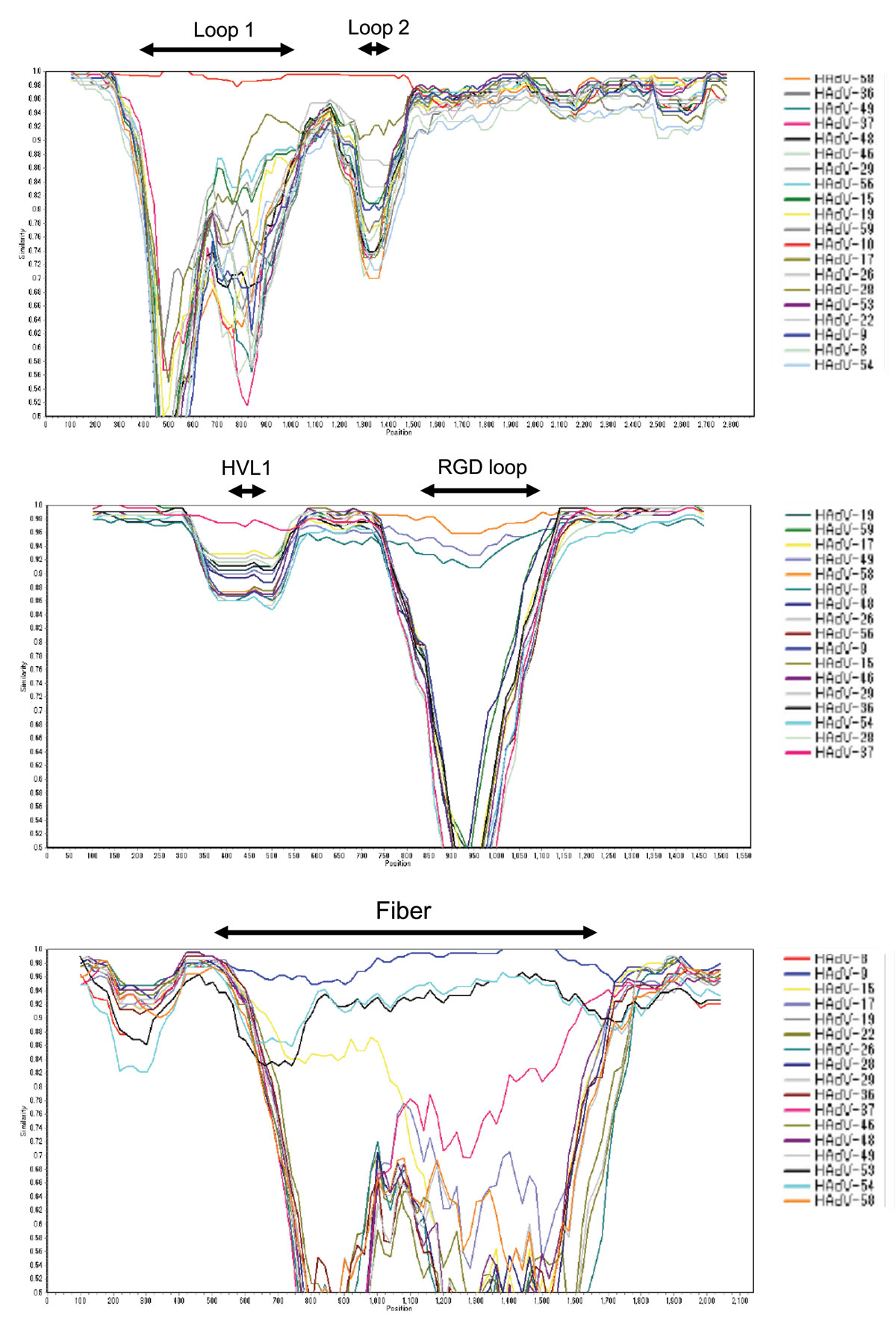Volume 18, Number 5—May 2012
Dispatch
Novel Human Adenovirus Strain, Bangladesh
Figure A2

Figure A2. . SimPlot analyses for identifying recombination sites in the hexon gene (A), penton base gene (B), and fiber gene, including the outside of the coding sequence, (C) of human adenoviruses (HAdVs). The x-axes indicate nucleotide positions in these genes, and the y-axes indicate similarities between HAdV-65 and other HAdV-D reference strains. Parameters used were a 200-bp window, a 20-bp step, and a Kimura 2-parameter. HVL1; hypervariable loop 1; RGD, Arg-Gly-Asp.
Page created: February 13, 2012
Page updated: February 13, 2012
Page reviewed: February 13, 2012
The conclusions, findings, and opinions expressed by authors contributing to this journal do not necessarily reflect the official position of the U.S. Department of Health and Human Services, the Public Health Service, the Centers for Disease Control and Prevention, or the authors' affiliated institutions. Use of trade names is for identification only and does not imply endorsement by any of the groups named above.